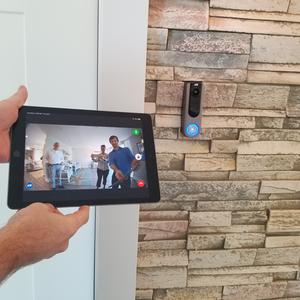
For many retailers, reflection on the past year is a story written on both sides of the coin. On one hand, consumers’ rapid shift to e-commerce has provided a boon to businesses; on the other hand, the supply chain logjam and ongoing labor revolution have forced the industry to get creative as it moves to capture critical momentum.
During this month’s virtual State of Innovation: Consumer of the Future event, Senior Reporter Ashley Portero was joined by retail insiders John Grubor, COO of ShipMonk; Dan Baldor, a managing director at Accenture; and Alvaro De Jesus, co-founder of Pivot Market, to discuss the current retail landscape.
The panel of experts discussed how companies are repositioning amid the pandemic easing and how the industry is bracing for the consumer of the future — reshaping their business models to create shopping experiences that attract, delight and invite customers to shop with ease — in-store or online.
A full video recap appears at the bottom of this article, but we’ve provided a few key highlights from the conversation below.
How did COVID affect the industry and specifically your business?
Alvaro: We had to close down our stores for six months and really reinvent ourselves. Previously, we were running traditional brick and mortar stores [and] doing wholesaling. Back in 2019, we transitioned into a retail-as-a-service approach. When COVID came, there was a lot of hype about just going online, [that] boutiques were going to disappear. So, we started to develop this site-enabled marketplace, where we are inviting other stores and brands to collaborate in this new way of commerce. I think ecommerce has become more central to brand strategies, and that any other activity brands are engaging with support their online strategies.
John: I think it affected ShipMonk and retailers in different ways. It was kind of a boon for business where we saw year-over- year sales for our clients increase by 100, 200, 300 percent. There’s a lot of ramping up production to get products out and a lot of pent up demand online. You had a lot of consumers sitting at home with their phones making instant gratification. Shifting forward in 2021, we’ve seen a pent up desire to go out and socialize and swing in the other direction to where in-store retail is now booming. The digital-first brands have had to rethink their models and try to figure out how to get into other channels.
Dan: We see five trends really, and it’s important to say these trends existed before COVID. What happened is COVID accelerated these trends. The first is moving more to digital. There are tremendous opportunities for retailers to rethink how they engage with these digital customers, and work to deliver personalized interactions, leading to longer-lasting relationships. The second is thinking locally and acting locally, shifting from a more global view of the supply chain to local omnichannel fulfillment. Third is customers want to buy from retailers that have a sustainable mindset. The fourth major trend is we need to reimagine the workforce. Lastly, retailers are noticing that they’ve got a lot of data and don’t know what to do with it. Those that are advancing and getting ahead are treating data like a strategic asset. Retailers that are continually and responsibly resetting their business will thrive in this world because things are moving so fast.
There was a boost in consumer spending during the pandemic. How can retailers keep up this level of demand moving forward?
Dan: We’re in a holiday period and we recently released a survey. So number one, it’s really interesting that in-store shopping has returned and not with the group you would think. It’s mostly with Generation Z consumers. These younger generations are going into the store because they’re looking for that more personal experience for what product they want to buy. Interestingly, the older generations, Baby Boomers or Gen Xers are increasing their online shopping. But consumers are prioritizing time and money on experiences, redirecting their spend from physical gifts to experiences and services, which is a really interesting shift over the holidays.
Alvaro: In the U.S. we are definitely back from the pandemic. It’s all about the experience. It’s all about authenticity, and [with] most small boutiques operated by their owners, it’s as authentic as it can get. [Shoppers] could be doing anything else, but they run to their stores because there’s something in the community and having a great, just human interaction. It doesn’t need to be much more complicated than that.
John: The most interesting thing that has happened is that people will become aware that opening up a store and selling products online is easier than ever, and really start [their] own business. The barrier to entry is the lowest ever. And with companies who can provide all logistical services to get product into the consumers hands, it really can be a no-touch product. As much as the demands grow in the final mile delivery network … you’re seeing a lot of investment in new companies figuring out how to get packages to consumers even faster. I think the next evolution will be when we build out networks to enable even faster delivery at the lowest possible cost to consumers.
Have you experienced any challenges resulting from supply chain shortages?
John: We’ve seen some customers simply throw their hands up because of the increased costs of containers moving from China to the U.S. where, in some cases, the cost of transporting the goods is more than the actual value. There’s some people on the side who said ‘We’re going to wait for this inflationary pressure, transportation, ease and then come back to market.
How does retail need to think about hiring and bringing workers back?
John: Labor is paramount to our success, and it’s a fierce market. We’ve increased our wages significantly to keep up with inflation pressures and now there’s a fight for talent. As everyone’s getting ready for peak season, we’re needing to be more flexible with people.
Alvaro: Our customer base, being small retailers, where it’s the store owner’s cost to [hire] sales associates … It's really prompted us to give them more tools to automate some of their processes. Making sure there’s visibility in terms of every dollar spent, marketing operations and so forth.
Dan: The worker itself is demanding more from the employer. They’re demanding flexible work hours, they’re demanding upskilling — to do things that are more valuable to the end customer. We need to listen to the employee. Other companies outsource, and we can look into part-time hiring, extend the workday to include what we call off-line hours, etc., to be able to satisfy workers’ desire [for flexibility].
What are your predictions regarding the future of consumers and retail in the next 5 years and beyond?
Alvaro: I guess that human interaction and authenticity are still at the core of the retail industry. That’s going to continue.
Dan: Number one, heavy personalization. You’ve got to personalize everything to the consumers’ likes and dislikes. Number two, I think experiences. I think customers are going to want to go into a store and feel good about buying something and have a good experience.
John: I think people connect with brands they [can] touch and feel an alliance. Whether in their homes or the stores, [we will see] consumers interacting with brands through a social experience.



